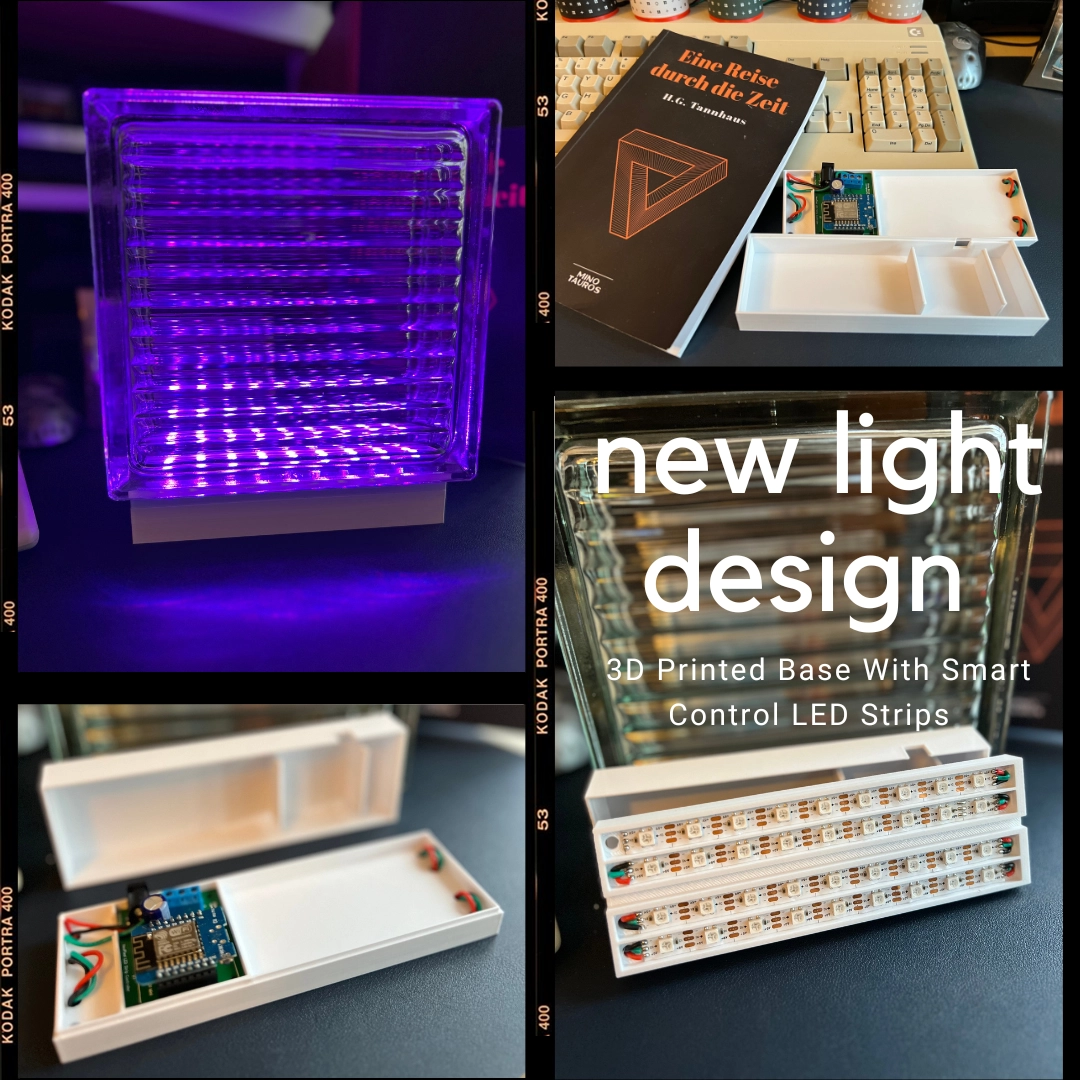Glass Brick Light With Smart Control
When I was idly browsing Instagram I came across an advert for (in my opinion) an incredibly expensive (€139) glass brick light. I can’t find the original advert but I believe this article shows the light from the same company.
The light used manual filters to change the colour, was not smart and I think was a lot for what is mainly one glass brick. I thought I could do better and for a lot cheaper, so I did.
Gathering Materials
For a start I thought it should be simple for me to reuse one of the smart LED strip controllers I made for my other lighting projects (for a full breakdown on how they work and how to use them with HomeKit see the NeoPixel LED Controller post), and I had a fair bit of previously used 5v NeoPixel LED strip that I could cut up and reuse.
I grabbed those bits and then started to look at what it would cost me to source a glass brick, I figured it should not be that expensive. It turned out that it is both very easy to source and very cheep (probably if I had not been lazy and gone to a local hardware store even cheaper as I paid £5 for delivery). The brick itself I sourced from a company called Glass Blocks Direct and it was a whopping £4.20. I waited for this to arrive and then I could get to the 3D design and printing.
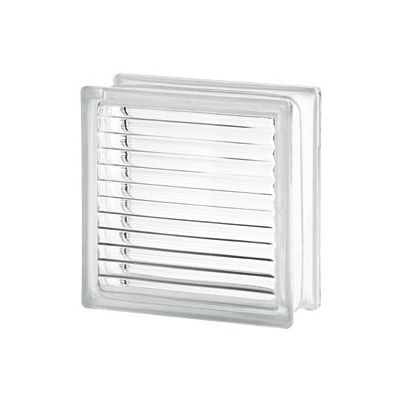 | 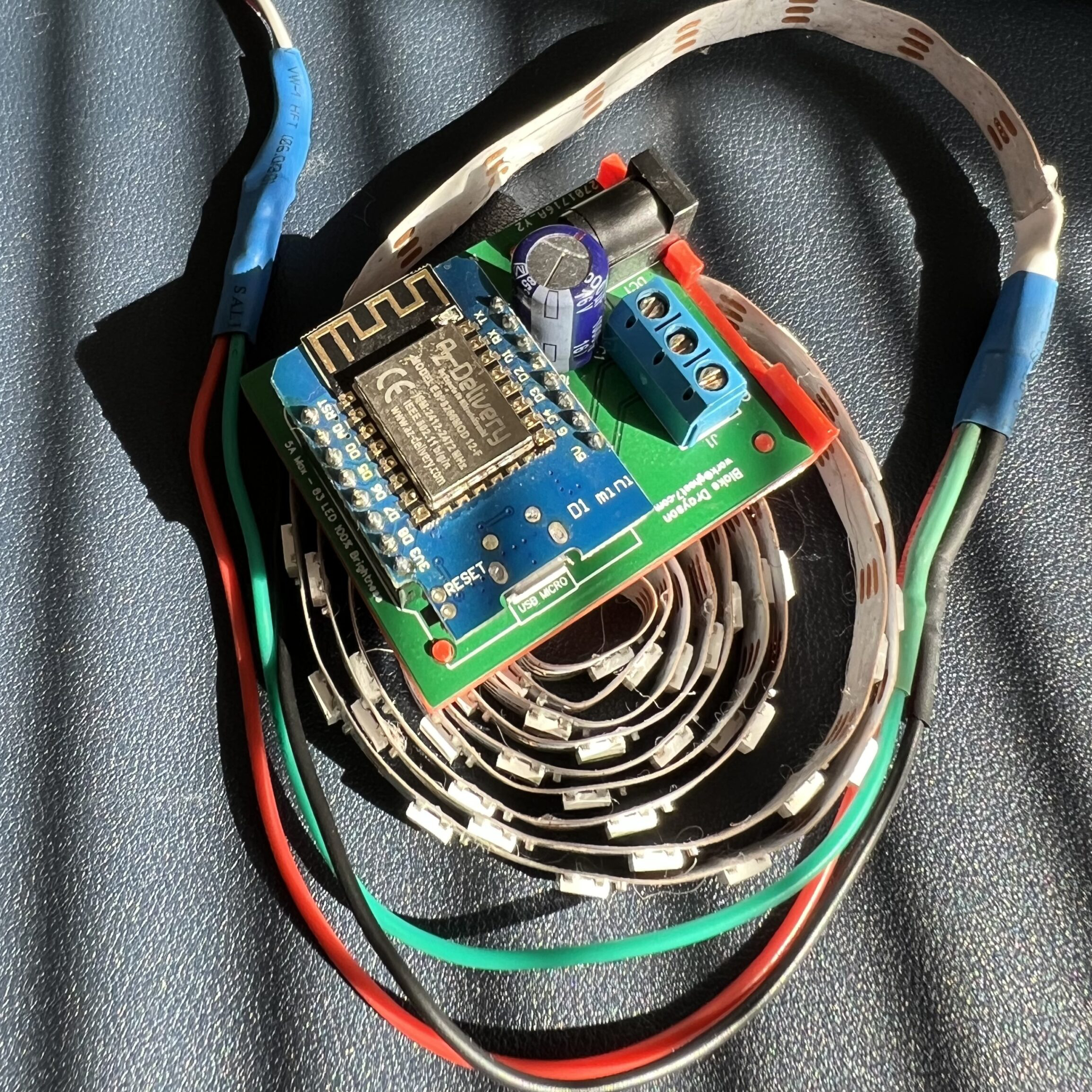 |
Glass Brick Light - Design
When the glass block turned up I encountered a problem, all around the sides of the block were coated in a white paint, I don’t know if this was intentional or part of a sample run but it was somewhat irritating. Thankfully with some judicious scraping, a bit of IPA and a magic sponge it all came off without too much mess. I could now proceed to the 3D design phase.
I initially created a simple short two strip channel that could hold some LED strip, I cobbled this together and tested if it would adequately light the brick from the bottom and demonstrate a proof of concept. It worked quite well and I moved on to produce a four strip version with a gap in the middle to accommodate the ridge that runs all the way around the glass brick. Thankfully my measurements were correct and this fitted perfectly on the bottom and I could start to work on the proper design for the base.
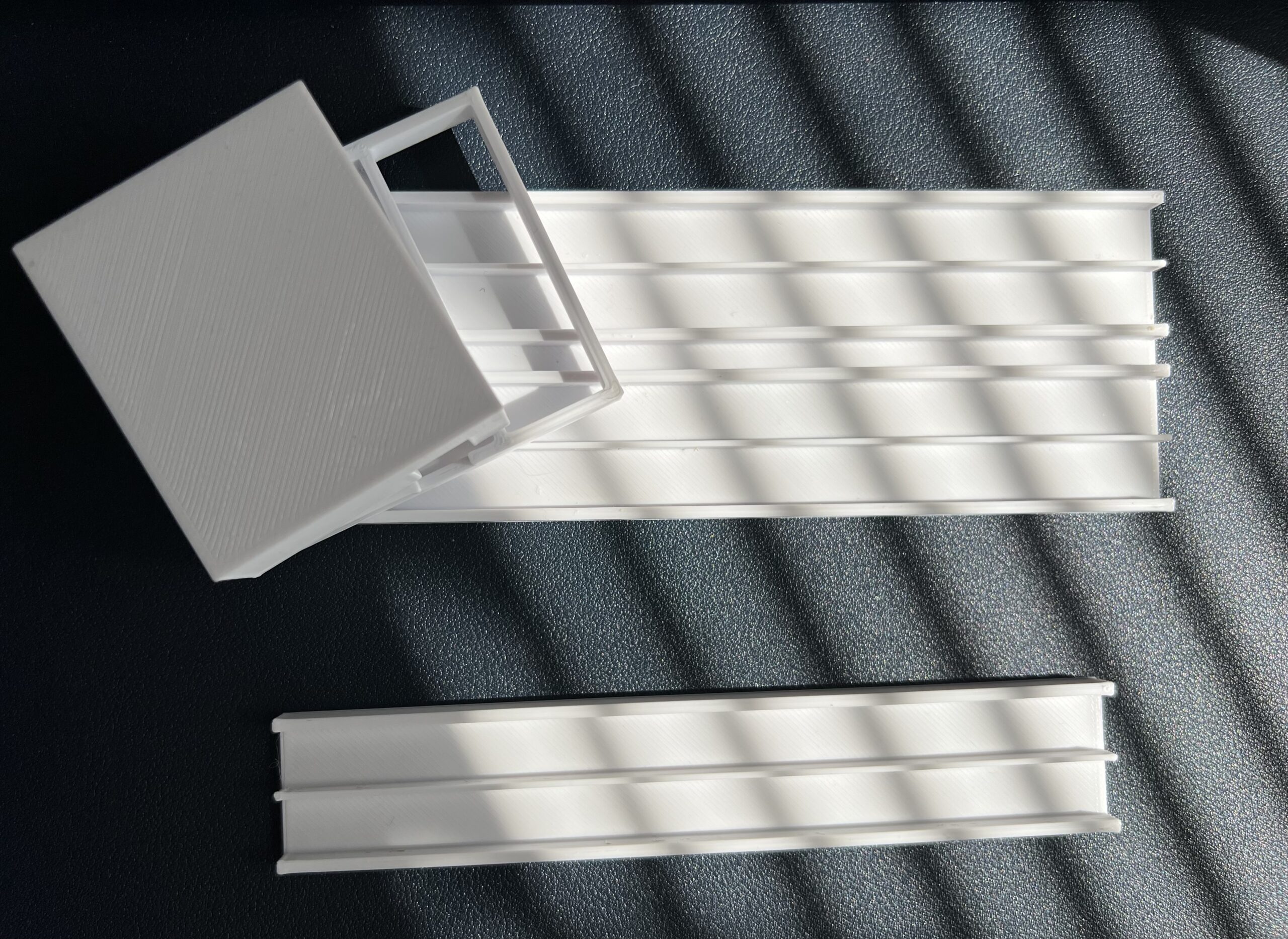
I wanted to have the base be fully contained and ideally not show any of the LED strips unless you looked very closely. I decided on a two part snap together design so the circuit board could be accessed if needed.
I extended the four channel design to 170mm, enclosed the ends and carved out some 5mm holes at each end of the channels. These holes will allow me to route the three wires required to link each strip together and then link it to the controller. Finally I raised an edge around the bottom of the channels with a lip around it (so that the second part could press fit into it) and built part of a small enclosure with a power cut-out for the circuit board.
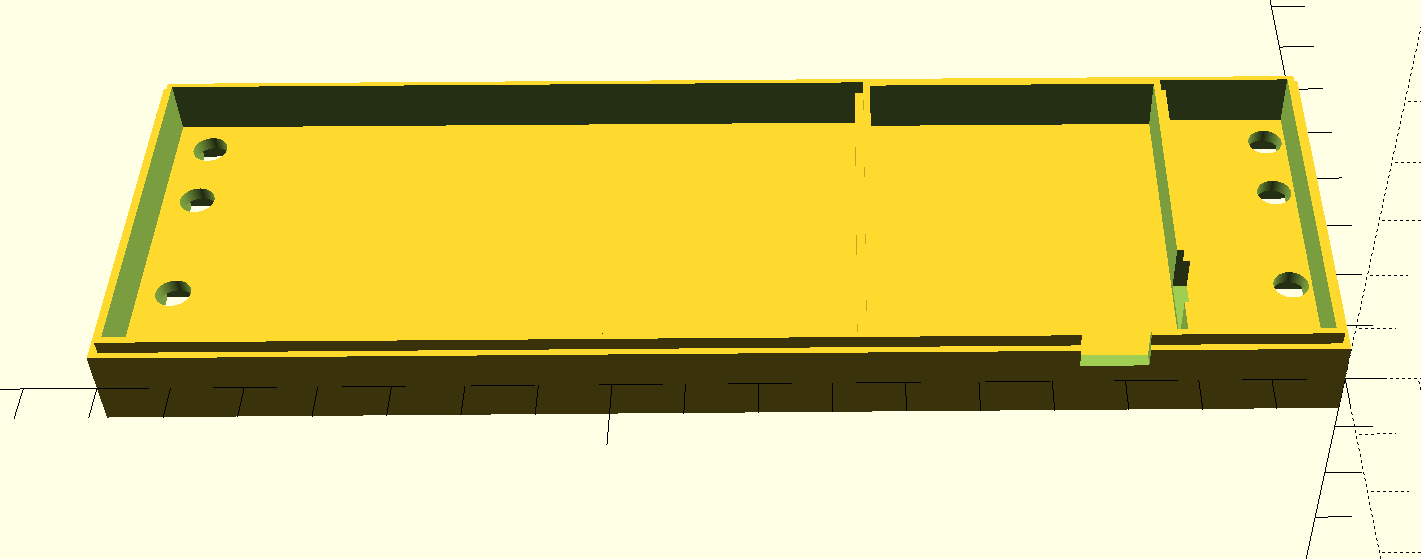
I set this section printing and started work on the part that would clip into it. This was somewhat simpler as it was just a box around the strip holder with a cutout for the power plug. I added some support walls that would clip around the controller board to provide a little bit more rigidity as the whole box area was hollow.
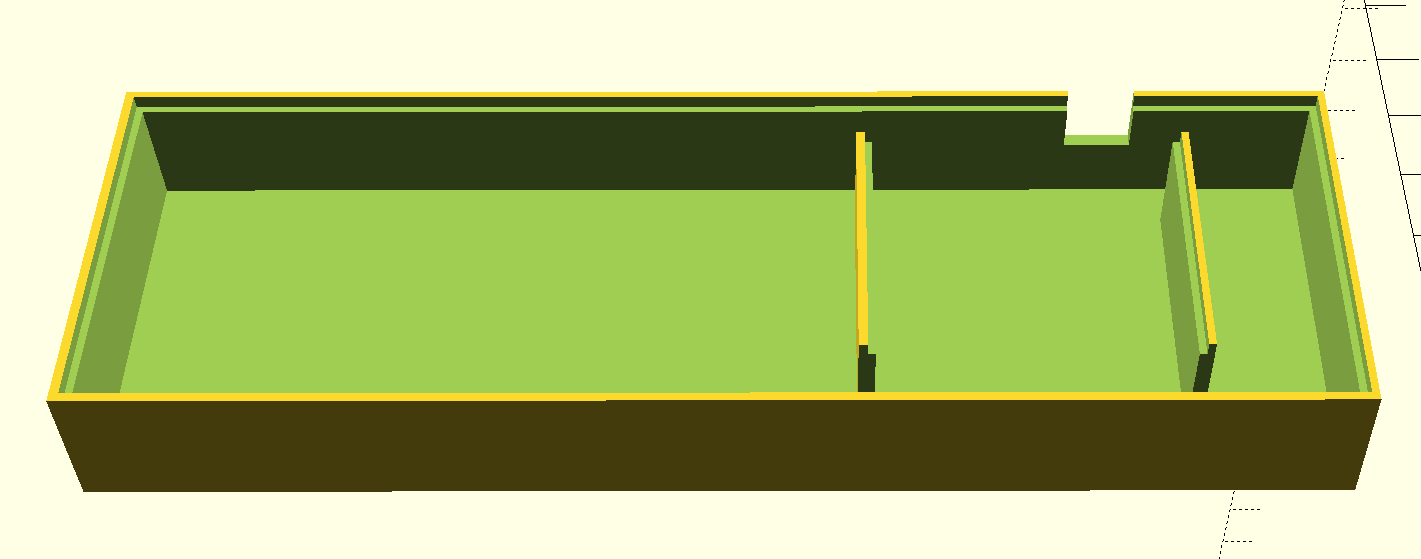
Construction
Once everything had finished printing and I test fitted the two halves (for once they worked first time, not often that happens) and began construction. I cut the four strips of NeoPixel tape into 9 LEDs per strip pushed them into the channels (it is a tight fit but allows it to hold even if the sticky on the tape has gone, so good for reusing old tape) and soldered them all up with suitable hookup wire. I fitted the controller board and connected the LEDs, I ran some tests and when I was happy clipped the two halves together and dropped the glass block on top.
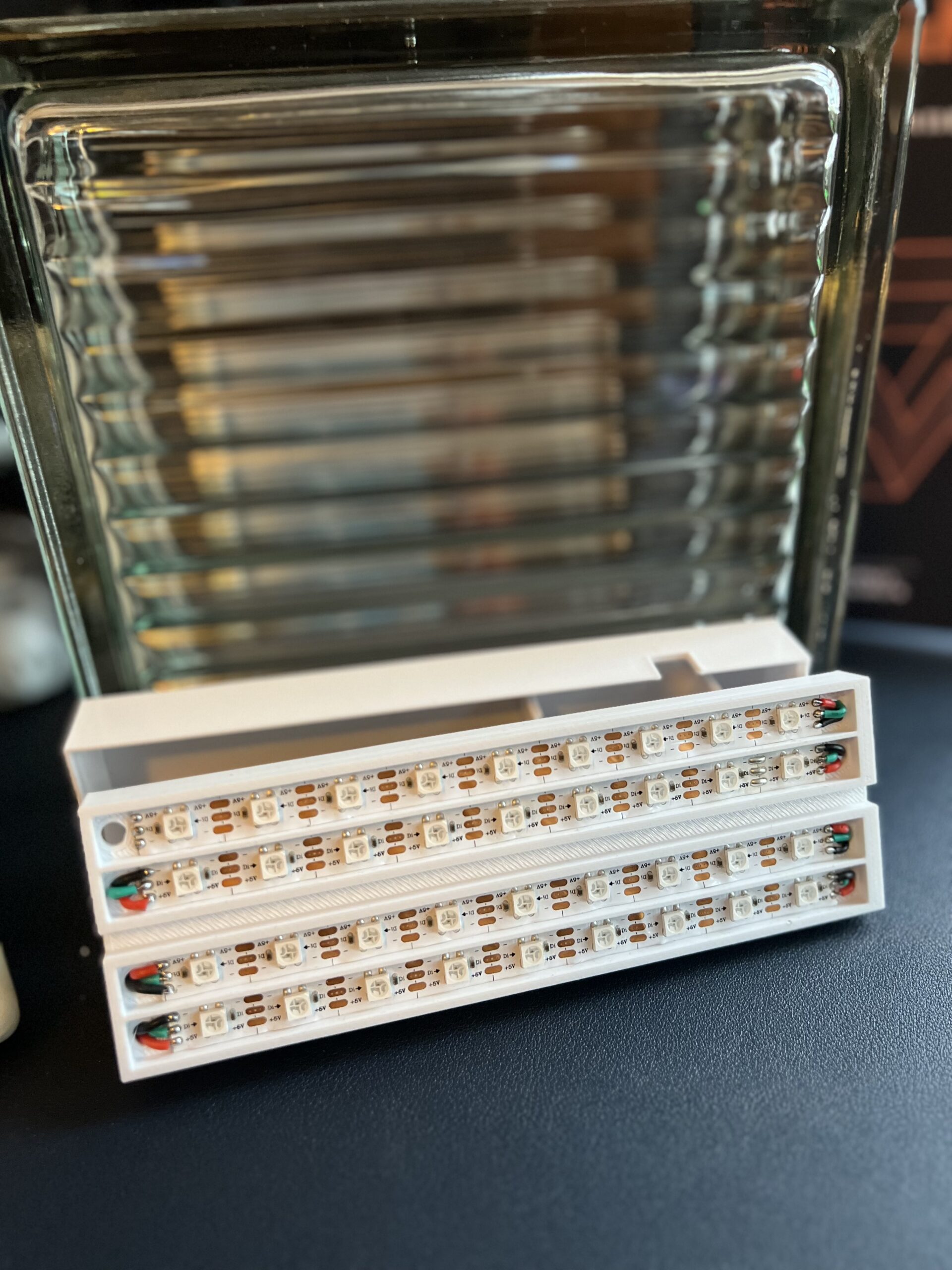 | 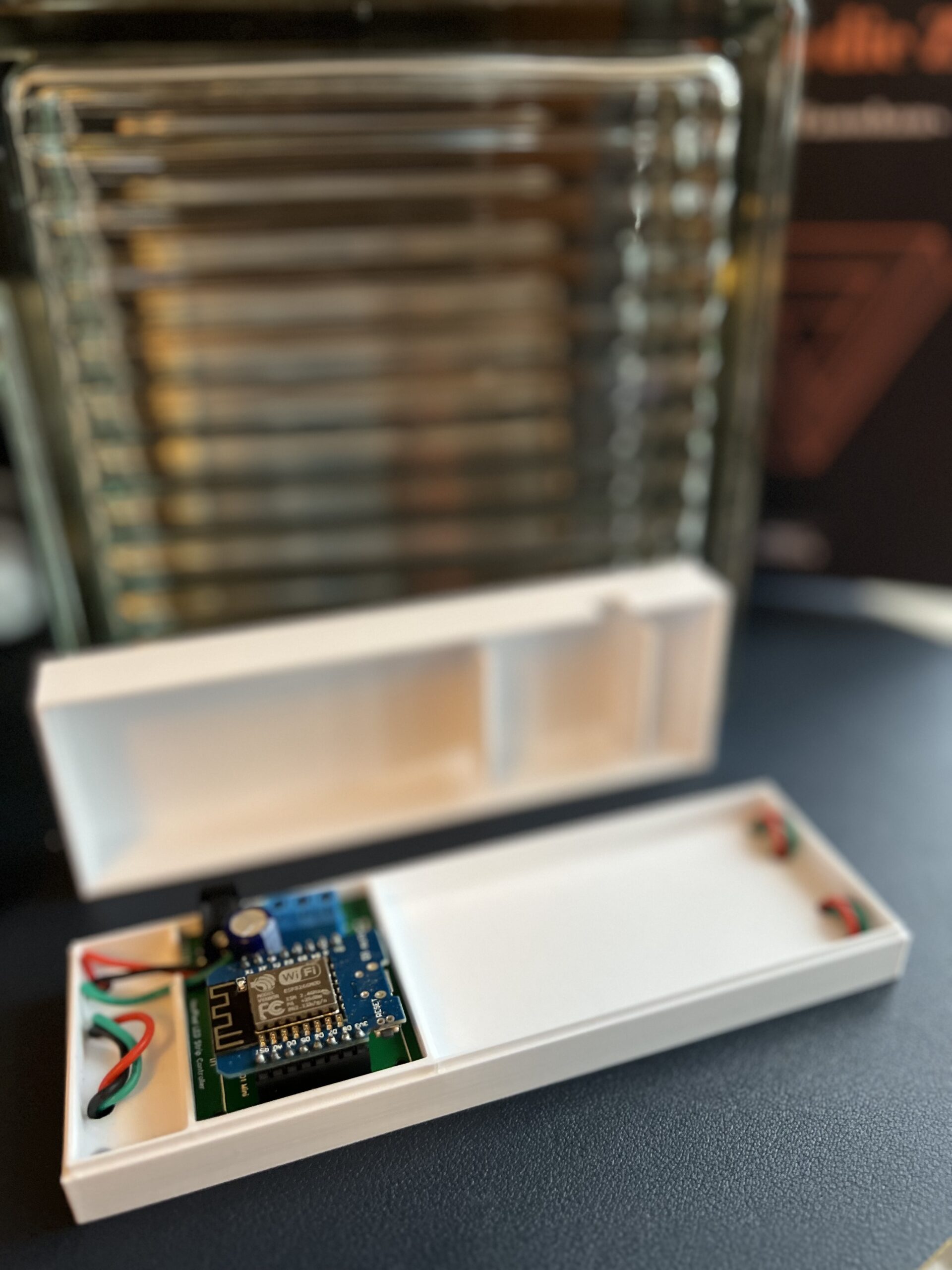 |
Glass Brick Light – Finished Design & OpenSCAD Files
I hope you enjoyed this little guide, if you want to print this base or adapt it to another design the OpenSCAD file is here and the top and bottom STL files respectively. Scroll past the gallery of pictures to get a rough idea of costs and a side by side comparison.
 | 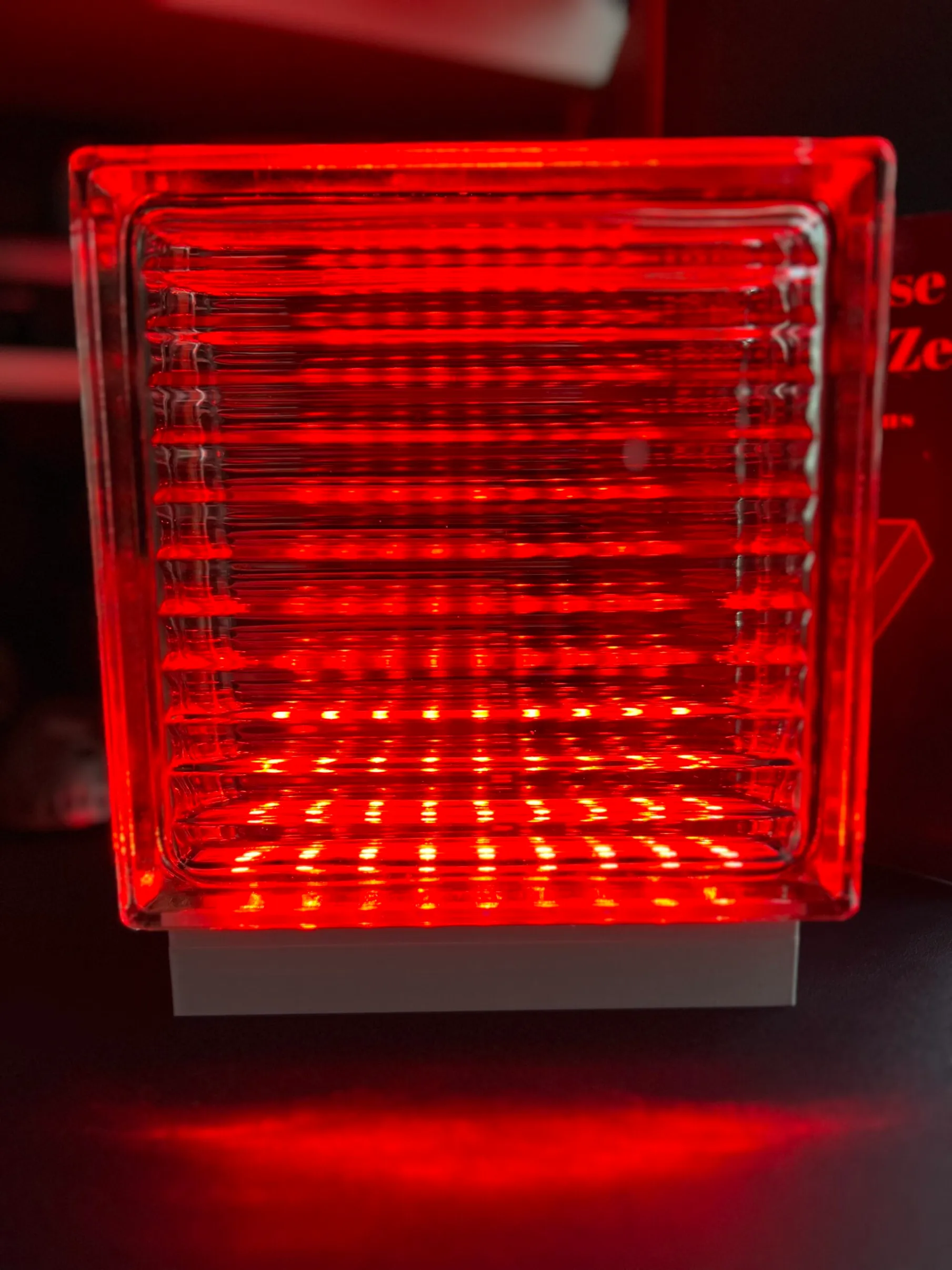 | 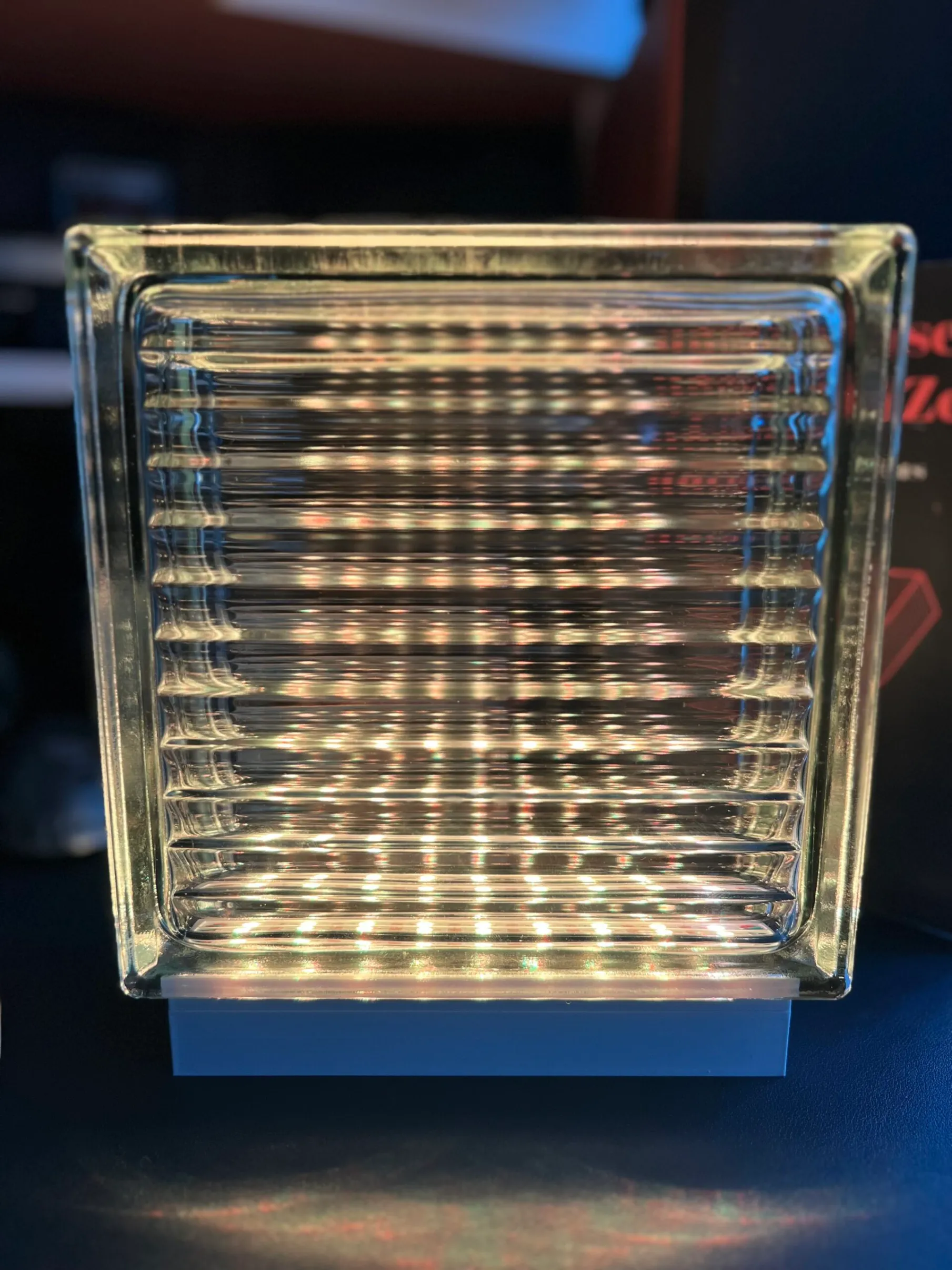 |
 |  |
What Did It Cost & How Does It Compare?
I started out with an idea to produce a cheaper and better version of the advertised light I had seen, how did I do? Let’s look at cost, what did it cost me to build.
| Item | Cost |
|---|---|
| Glass Block | £4.20 |
| Lolin D1 Mini ESP8266 Board | £6.25 |
| Custom PCB, Capacitor, Headers, Power Jack | £8.00 |
| NeoPixel LED Tape 1M | £11.40 |
| 3D Printer PLA+ Filament 84g Approx | £0.18 |
| Total | £30.03 |
Now there are some other associated costs, one is actually having a 3D printer and soldering equipment there is also power for running the 3D printer so it’s not exactly a fair comparison. However roughly £30 vs €139 is quite a big difference.
So how did it turn out side by side. It’s not perfect and the base design is different but I am very happy with the outcome. Add to that I can control it from my phone and change the colour of the light to whatever I want and run effects on the light, I think practically it is a lot better than the original product.
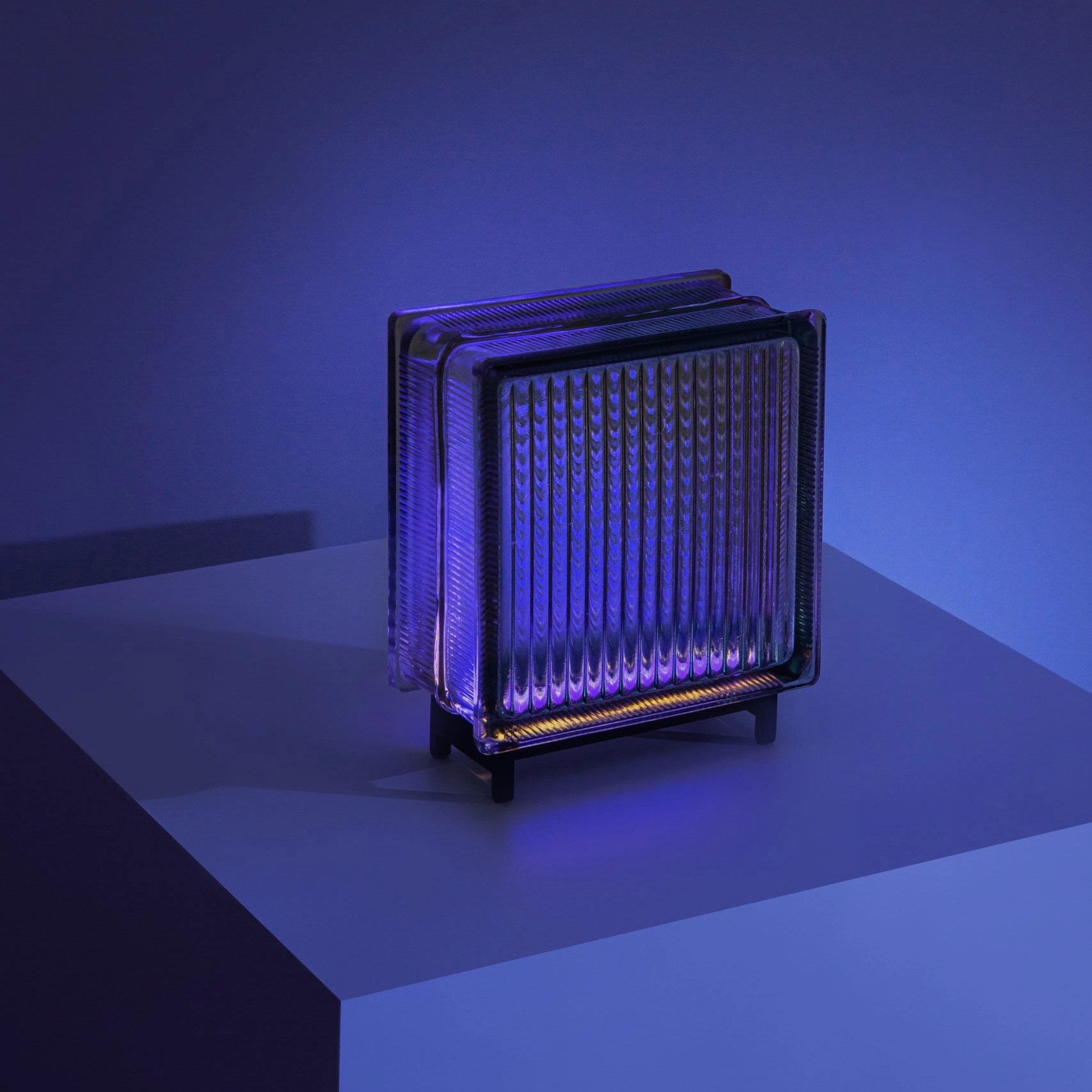 | 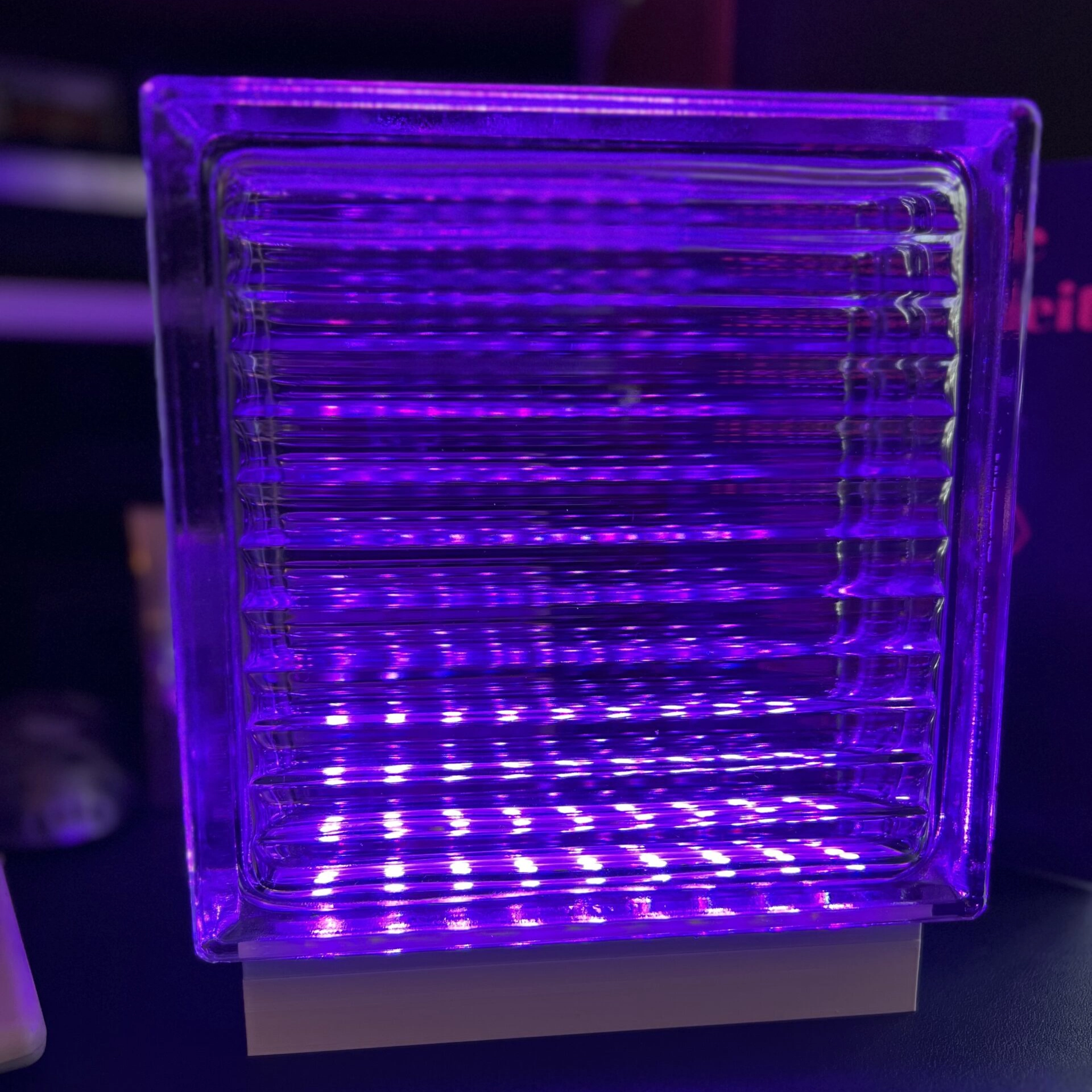 |
